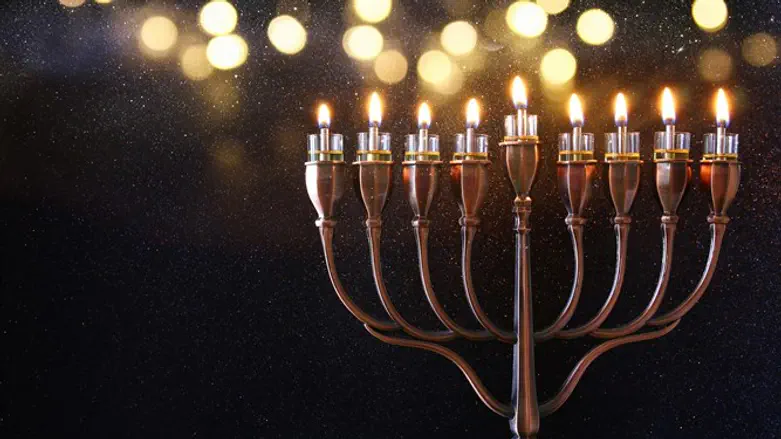
“If one has only enough money to buy either Shabbos candles or Hanukkah candles, but not enough to buy both, he should buy Shabbos candles, for the Shalom Bayit that Shabbos candles provide (peaceful atmosphere pervading the house by it not being dark, dangerous and foreboding in the house during Friday night) …for the whole Torah was given to create peace, as it says (Proverbs 3;17): ‘The Torah’s ways are ways of pleasantness, and all its paths are Peace( Shalom)’”(Rambam, Yad Hachazakah, the Laws of Hanukkah, 4;14).
Rav Mordechai Goldenhersh, my Rebbe who taught me most of what I know of Halakhah, has asked why the Rambam finished the laws of Hanukkah with a message for Shalom, peace. Certainly, Hanukkah is a story of struggle and war, of Jew vs. Jew, and Jew vs. Greek; Hanukkah’s message does not seem to be one of peace. Why finish with Shalom?
I think the answer is to be found in an examination of the daily prayers. The end of the Shemoneh Esrei prayer, which is backbone of each of the three daily prayers, is a prayer for Shalom, for peace- but the word also means wholesomeness (Shleimut, of the same Hebrew root as Shalom) and harmony.
Just before the prayer for Shalom, we read the Al Hanisim prayer, a prayer of thanks for the miracles of Hanukkah. In fact, Al Hanisim is inserted in the blessing Modim, a prayer of thanks and Hod. Hod means glory, and the battle of Hanukkah was between the glory of Greece, and the glory of Yisrael/Israel. As I’ve written before, the battle was between Greeks and Jewish Hellenists, who look only at the bottom line and the final score, and between Chashmonaim who value the battle itself, doing what is right no matter what the odds of success or the final consequences. This was the battle of Yosef, the man of vision/dreams/ potential, (the Chayn of Hanukkah) חן, and beauty – and between the mah betzah (Breishit 37;26)/Tachlis , mechanistic materialism of Judah and his brothers. It was a battle between the potential and the actual.
Rav Kook writes (as explained by Rav Tzvi Tau, Emunat Iteinu, vol.11, pages 83-87) that the resolution of this friction between Yosef/potential and Yehudah/ actual is resolved by “ the inner prayers of Israel that attaches itself only to the Divine Shalem (whole, complete, all-inclusive) light (אור)”. Rav Kook contrasts the unlimited Chesed (kindness, bounty ) of the Almighty, which seeks only to shower boundless good to Man, with our limited actual Beings, which are capable of receiving only limited Divine good. However, we can pray for G-d’s unbounded Chesed to grant us even the ability to receive good according to our soul’s limitless potential, and not according to our limited actual state- and G-d can grant such wishes. Rav Kook continues:
“We pray (in the prayer אנא בכח) that the Lord should unbind our fetters, to let loose all the limits (Meitzarim, a hint to Mitzrayim/Egypt) of reality that restrict and limit the appearance of full Divine Light from above (G-d’s limitless realm of Good). We want (and, Rav Shlomo Carlebach adds, can, on Hanukkah, even demand) that these boundless Divine attributes, in all their Shleimut, become reality in Creation. For then the entire Universe will be repaired ,ושלום העולמית יאיר בכל מרחבי היקום- and Universal Shalom will shine its light in all corners of existence”.
Rav Matis Weinberg sheds further light (אור) on the connection between these two Blessings of Shmoneh Esrei, that of thanks/Hod/glory expressed in the world of the actual, and the blessing of Shalom/Shleimut / wholeness in the world of the soul’s unlimited potential (for our souls are actually a piece of the Divine, in Man). Just as the brothers Yosef and Yehudah reach a reconciliation in the Torah(partial only, in Genesis 44;18 to 47;12- but full in the future described in Ezekiel 37;15-28), so too after the battles of Hod described in the Al Hanisim of the Modim blessing, Shalom is achieved in the final blessing. To quote Rav Weinberg in Frameworks/Hanukkah (pages 320-321):
“Hod implies that it is possible to express in the actions of a human being his very essence, all the commitment and care which make up his world view. More-Hod implies that the potential of all creation can be expressed through the mesiras nefesh of even a single individual; that Man can shine with the light of creation itself- the Ohr Haganuz. Hod implies that there is no contradiction between the vast potential which is mine and the limited (actual) life that I must lead as an individual, for in leading a life with the nobility and glory of Hod, I express in all my acts the entirety of my own (limitless, Divine) potential…Hod closes the hiatus between potential and actual, between individuality and the klal, for it makes the two completely interdependent “(a Shalem, whole synthesis of Yosef and Yehudah. Joseph and Judah).
When one considers that Rav Zevin ( Moadim Behalachah) writes that the conflicting Halakhic views of Beit Hillel and Beit Shamai reflect this dichotomy between actual/Yehudah and potential/Yosef, then the full, shalem picture of this perspective on Hanukkah comes into focus( see my Rule of Threes, this website Dec. 23, 2005).
We Jews stand at an era close to the coming of Moshiach, and we are on the brink of the final resolution of Yehudah/Jew vs. Yosef/Israel conflict. Every effort must be made to heal this breech, and never to repeat the Jew -on-Jew violence that scarred the last 230 years of the Second Temple era. We saw a peaceful resolution of the December 25, 2016 verdict of eviction of the Israeli Jews of Amona, and may our future contain only Chayn, Hod, Shleimut, Shalom and the closing words of the Rambam to the laws of Hanukkah: דרכיה דרכי נעם וכל נתיבותיה שלום – its ways are ways of pleasantness, and all its paths are Shalom.